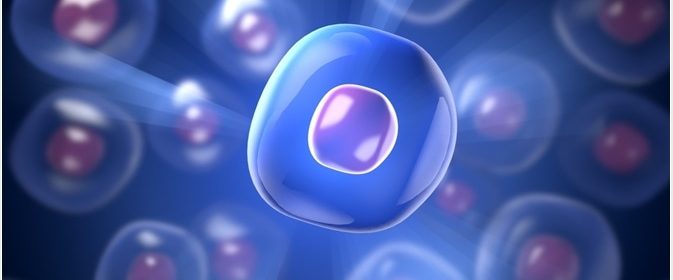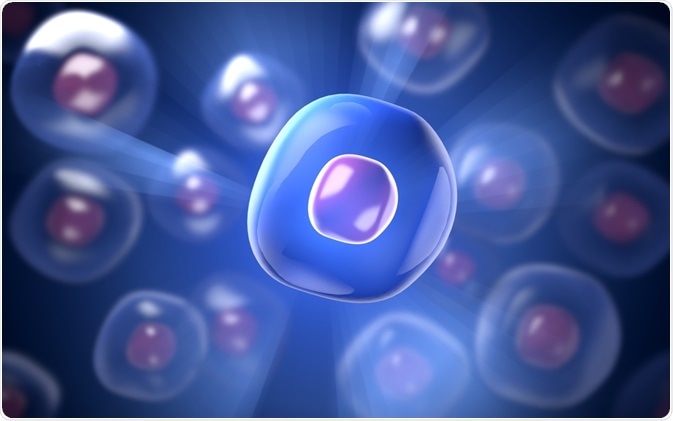Developing an Artificial Cell-On-A-Chip

Creating an artificial “cell-on-a chip” that can mimic the function of biological cells is a big goal for synthetic biology. The development of this idea is on-going, and in this piece, three examples will be investigated.

How can the exchange of energy and materials be replicated in a cell-on-a-chip?
In the living cell, the biochemical reactions which occur are maintained in a “steady state” by the exchange of energy and materials with the surrounding environment. Generally, in vitro systems do not utilize this exchange, therefore these systems will reach chemical equilibrium, and make it difficult to investigate complex biochemical networks that occur within a cell.
To address this, Niederholtmeyer and co. created a system for gene expression using a microfluidic system to create a cell-on-a-chip. The system was based on nanoliter-sized microfluidic reactors. Into this system, a mixture containing the necessary components for gene expression was added in dilution steps, alongside the template DNA. This lead to the displacement of the fluid that was already present in the system. Fluorescence labeling was used to determine the amount of DNA, RNA and protein present in the system. This cell-on-a-chip was able to maintain steady-state gene expression for around 30 hours.
Can gene expression from a cell-on-a-chip system be controlled?
Developments in the search for a cell-on-a-chip system have yielded systems that can successfully express genes outside the cell; these include systems such as vesicle bioreactors and morphogenic-like genetic circuits. One issue which can arise when designing an artificial cell-on-a-chip system is how to measure dynamic changes in gene expression when using a continuous expression system.
To address this, microfluidic chips with switching valves have successfully been used to analyze steady-state and dynamic gene expression. However, these systems also have the drawback in that concentration gradients of molecules are potentially lost with the flow of the fluid, particularly those that are over a small area; this is important, as certain morphological processes are controlled by variations in the concentration of molecules.
Karzbrun and co. developed a system that could maintain such concentration gradients, as well as gene expression at high surface density, protein turnover, ability to exchange materials with the environment all within a defined shape.
The system starts with DNA templates, which encode for genes that the cell-on-a-chip will express. These double-stranded DNA templates were assembled onto circular compartments within a silicon chip. These compartments were connected by capillaries, which were then connected to the flow channels.
Then, extracts from Escherichia coli cells were added to the cell-on-a-chip, where the high flow resistance in the capillaries resulted in the diffusion of the reaction components into the DNA compartments. This enables the metabolism within the cell-on-a-chip to be continuously maintained.
Protein synthesis then occurs within the DNA compartments, which the diffused through the capillary to the flow channels. Here, a concentration gradient was formed; this was highest in the DNA compartment and decreased closer to the junction between the capillary and flow channel. This showed that this cell-on-a-chip system is capable of not only expressing genes, but this can be controlled to occur in specific locations and with specific concentration gradients.
Can you study protein degradation using a cell-on-a-chip?
The above examples show that it is possible to make proteins using a cell-on-a-chip system, however, the question remains as to whether protein degradation can also be carried out by such systems. To investigate this, Tonooka and co. designed a system that included protein degradation alongside gene expression.
First, the authors took cell extracts from two E. coli strains, one which contains the protease ClpX, which is the protein degradation component. ClpX was expressed from a plasmid, meaning its expression in E. coli can be controlled. These cellular extracts were then used in a microfluidic system formed from a silicon wafer.
To ensure that proteins could be degraded in this cell-on-a-chip system, the authors first used a fluorescently tagged protein and observed to see if fluorescence diminished, indicating degradation of the protein. Observations showed that the cell-on-a-chip system is capable of degrading proteins.
However, what happens when you combine protein degradation with gene expression, i.e. making of proteins? Here, the authors utilized a gene circuit to investigate; briefly, this consists of an “oscillatory circuit” and a “reporter circuit”, where the expression of the fluorescently labeled reporter protein is controlled by the oscillatory circuit. The resulting circuit showed an oscillating gene expression pattern in E. coli cells. This circuit was placed on a plasmid and then immobilized onto the cell-on-a-chip.
When the E. coli cell extracts were added, fluorescence emitted from the cell-on-a-chip oscillated around four times. This indicates that this cell-on-a-chip system is capable of not only gene expression, but also protein degradation as well. Further developments and refinements of this system could pave the way for more complex gene expression to be studied, as well as bringing in vitro artificial cell-on-a-chip closer to in vivo cellular systems.
Sources
Niederholtmeyer, H. et al. (2013) Implementation of cell-free biological networks at steady state. PNAS https://doi.org/10.1073/pnas.1311166110
Karzbrun, E. et al. (2014) Programmable on-chip DNA compartments as artificial cells. Science DOI: 10.1126/science.1255550
Tonooka, T. et al. (2019) Artificial Cell on a Chip Integrated with Protein Degradation. IEEE 32nd International Conference on Micro Electro Mechanical Systems DOI: 10.1109/MEMSYS.2019.8870666
Further Reading
- All Cell Content
- Structure and Function of the Cell Nucleus
- What Are Organelles?
- Cilia and Flagella in Eukaryotes
- Mitosis vs Meiosis
Last Updated: Dec 18, 2020

Written by
Dr. Maho Yokoyama
Dr. Maho Yokoyama is a researcher and science writer. She was awarded her Ph.D. from the University of Bath, UK, following a thesis in the field of Microbiology, where she applied functional genomics toStaphylococcus aureus . During her doctoral studies, Maho collaborated with other academics on several papers and even published some of her own work in peer-reviewed scientific journals. She also presented her work at academic conferences around the world.
Source: Read Full Article